Park Guell is another Gaudi design. It was built from 1900-1914, although it didn’t open as a public park until 1926. In 1984 the Park was declared a UNESCO world heritage site.
The Park was originally part of a large housing project envisioned by Guell and Gaudi, which ultimately failed. Only two houses (out of the planned 60) were built – one of them is was where Gaudi lived from 1906 until his death in 1926. They had envisioned luxury homes surrounding the Park, all with an artistic flair. Unfortunately, the idea didn’t sell, so it became a private Park until 1926, when it was opened as a public Park.
Most of the Park is greenery, so it would have been better if we had visited during spring or summer. Still, we walked around the park and enjoyed being outside. It was also interesting to see a different side of Gaudi.
This is the main entrance of the Park. We actually entered on the east side and exited this way. 🙂
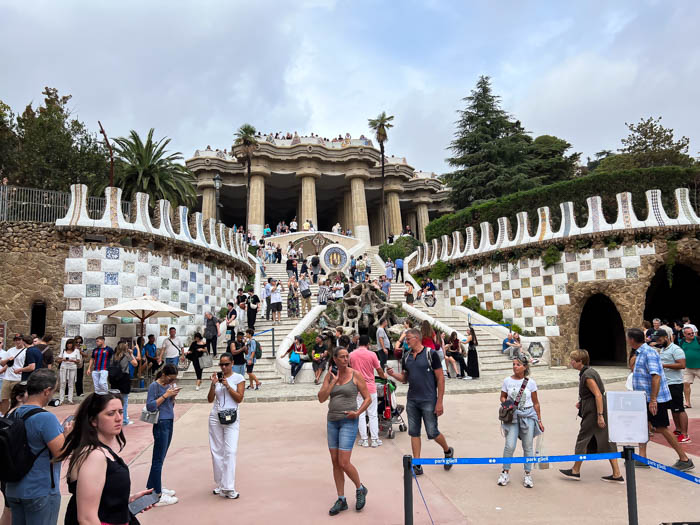
The walls have more interesting tile designs reflecting nature, religion, politics and art.
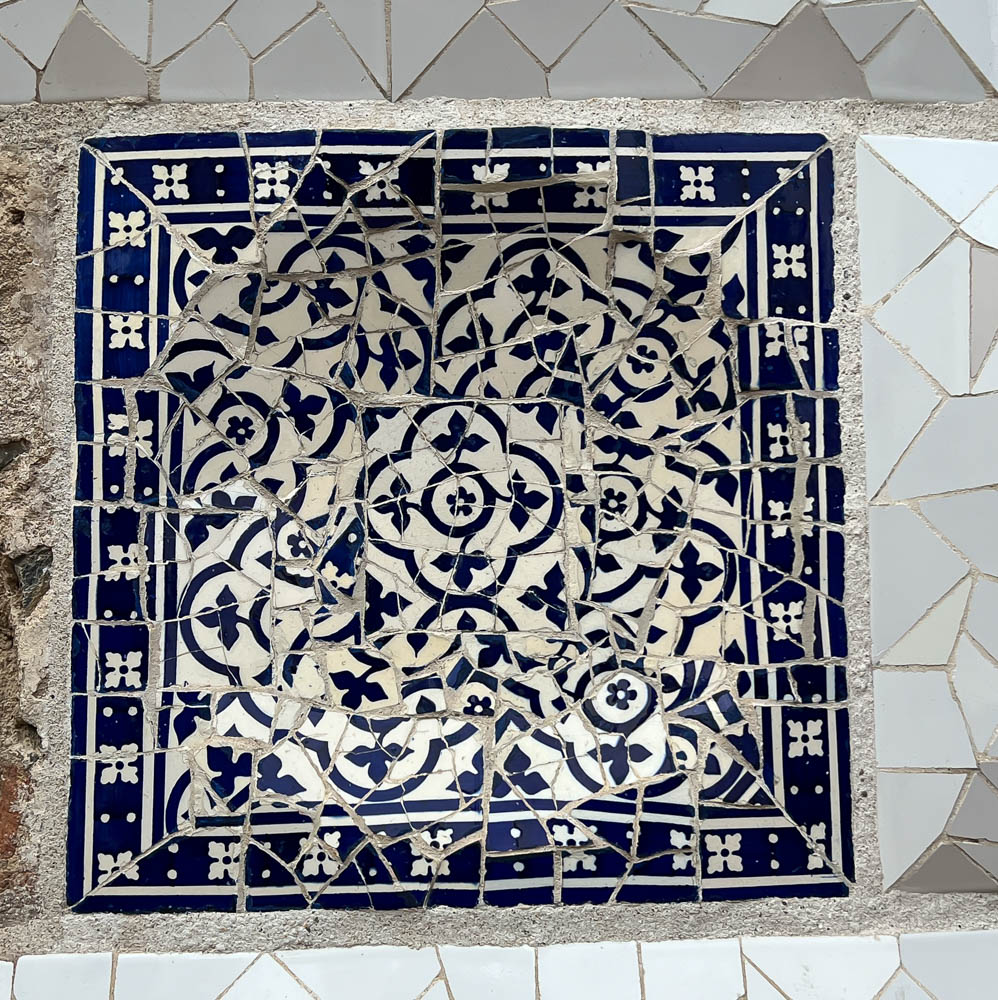
If we turn around and look at the entrance gate, there are two buildings that look to me like gingerbread houses with their brown curvy stone walls and the white tile-work that looks like icing.
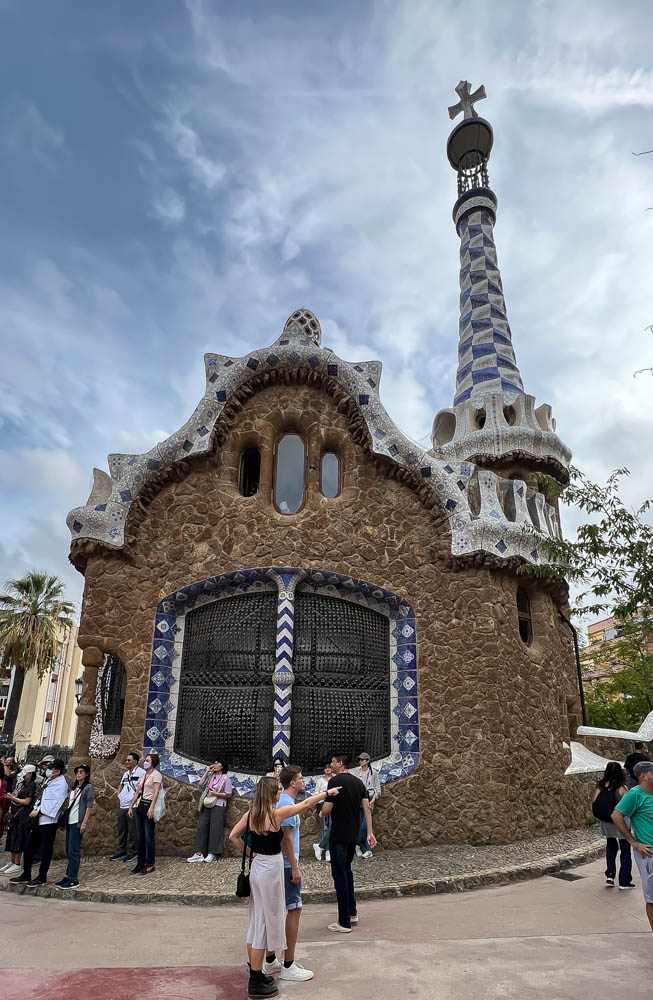
The tiles are laid using the “trencadís” technique – similar to mosaics, but the tile pieces are broken in random shapes. This allowed the tiled surface to work better with curvy shapes compared to standard mosaics.
The other building has a similar design. And there are interesting shapes rising up on each side of the stairway with more tile-work.
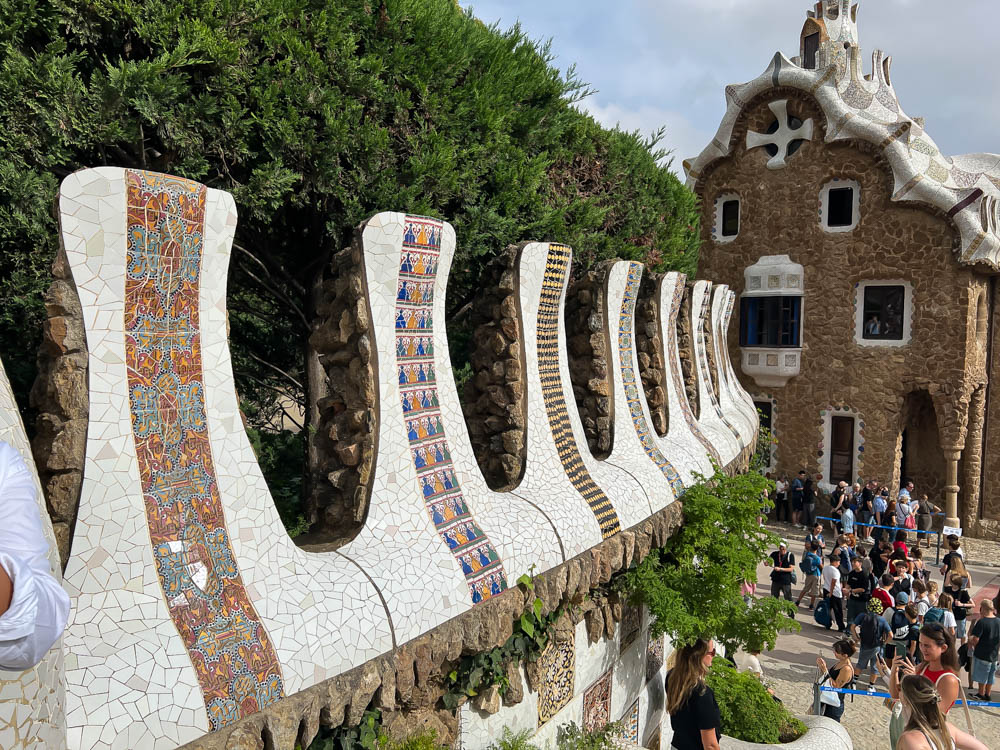
Up the stairs you find the iconic Barcelona salamander (also called the dragon). This is an iconic Gaudi design – many, many tourist shops have some version of the dragon to buy and bring home. Nope, we didn’t buy one. 😉
This was originally a fountain with water coming out the mouth and flowing down through other sections in the middle of the stairway.
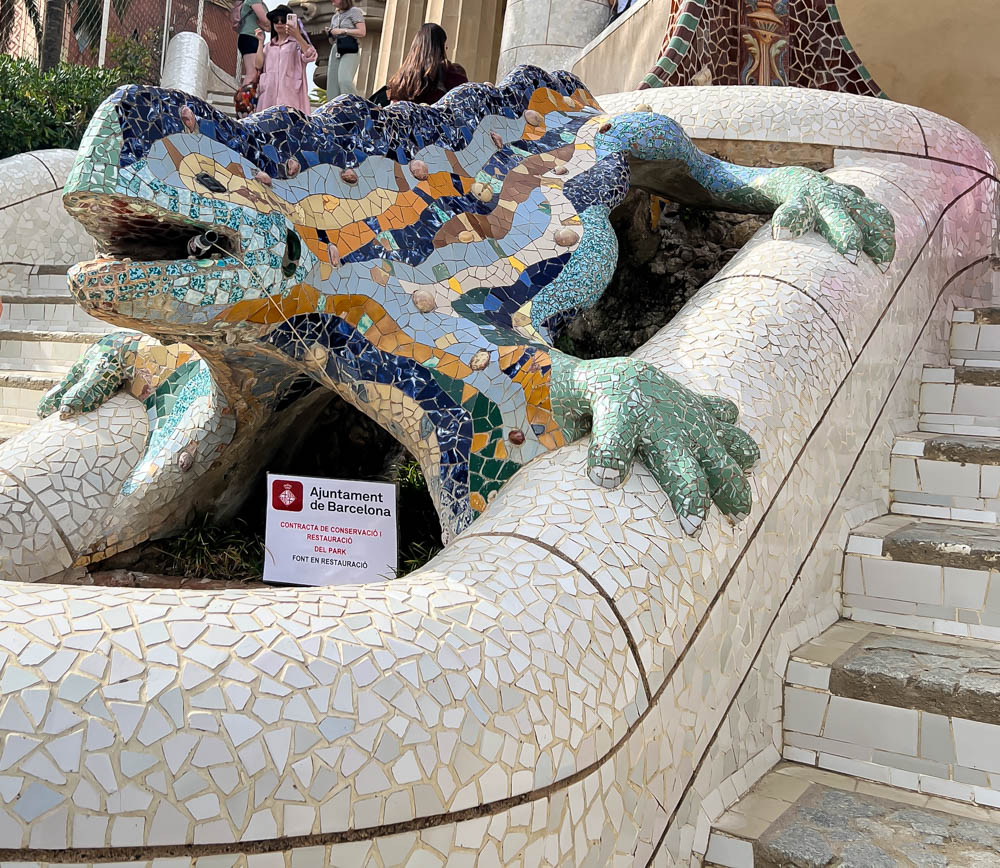
Looking at the top of the first picture, above, you see columns at the top of the stairs. Up there is the famed open area Greek Theater.
Here is a side view of the open-air theater, with the stairs leading down underneath to the left and right.
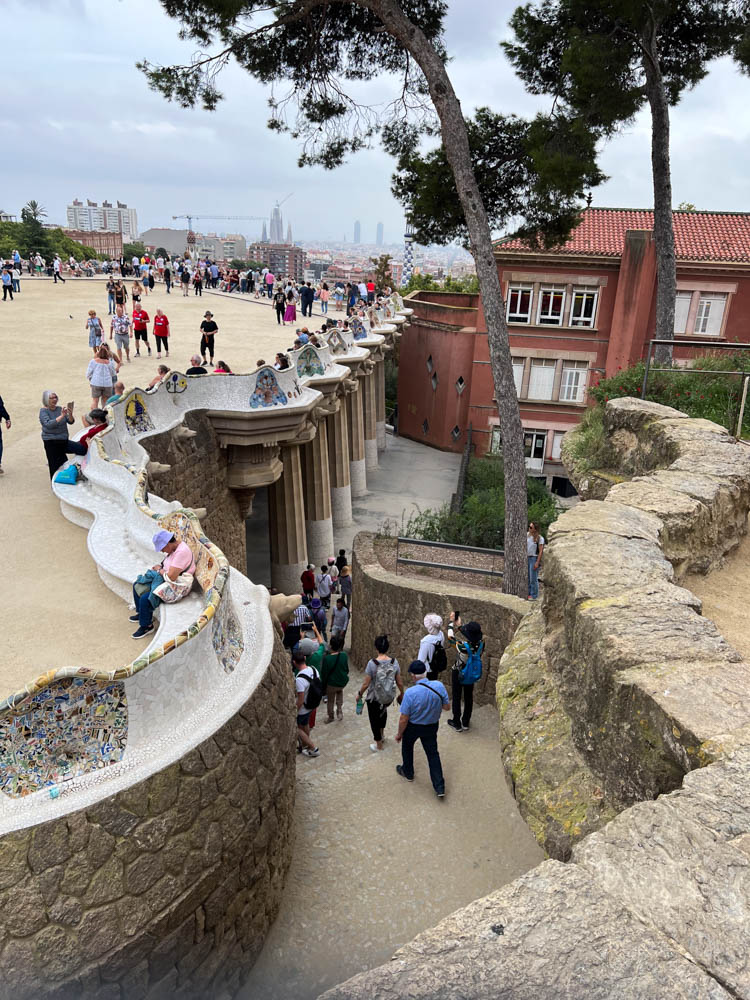
The top is a huge open expanse with an undulating “sea serpent” making up the benches that ring the area. While Gaudi was responsible for the overall design, his collaborator, Josep Maria Jujol, designed most of the benches. Again, using the trencadís tile-work technique.
The benches were mostly full of people sitting on them during our visit! But, we got a few pics without people.
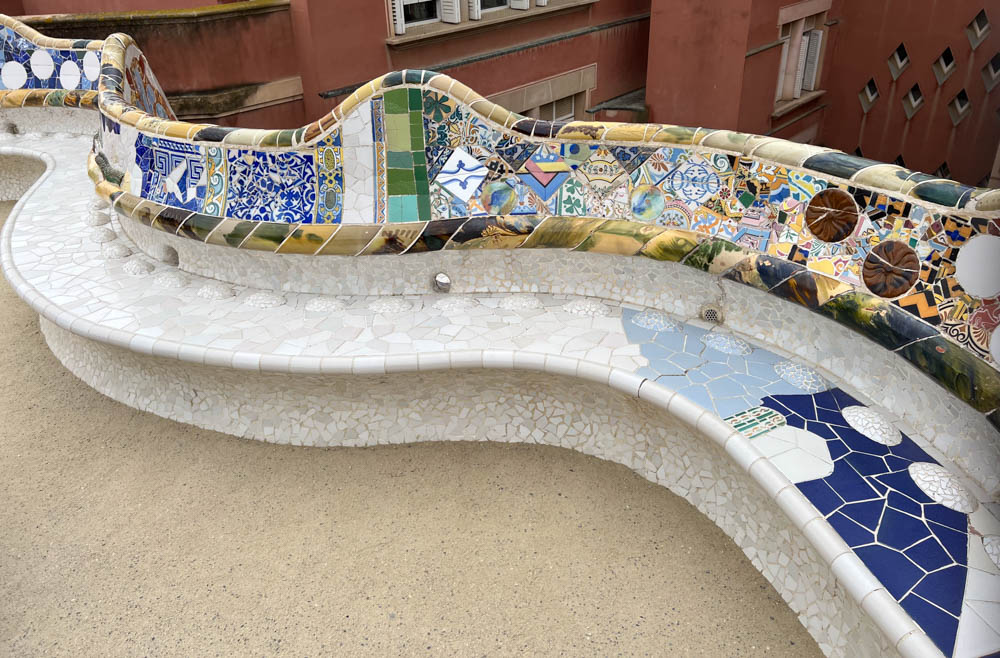
It’s neat that they also carefully designed the back of the benches. And, they incorporated drain holes for the rainwater to flow through.
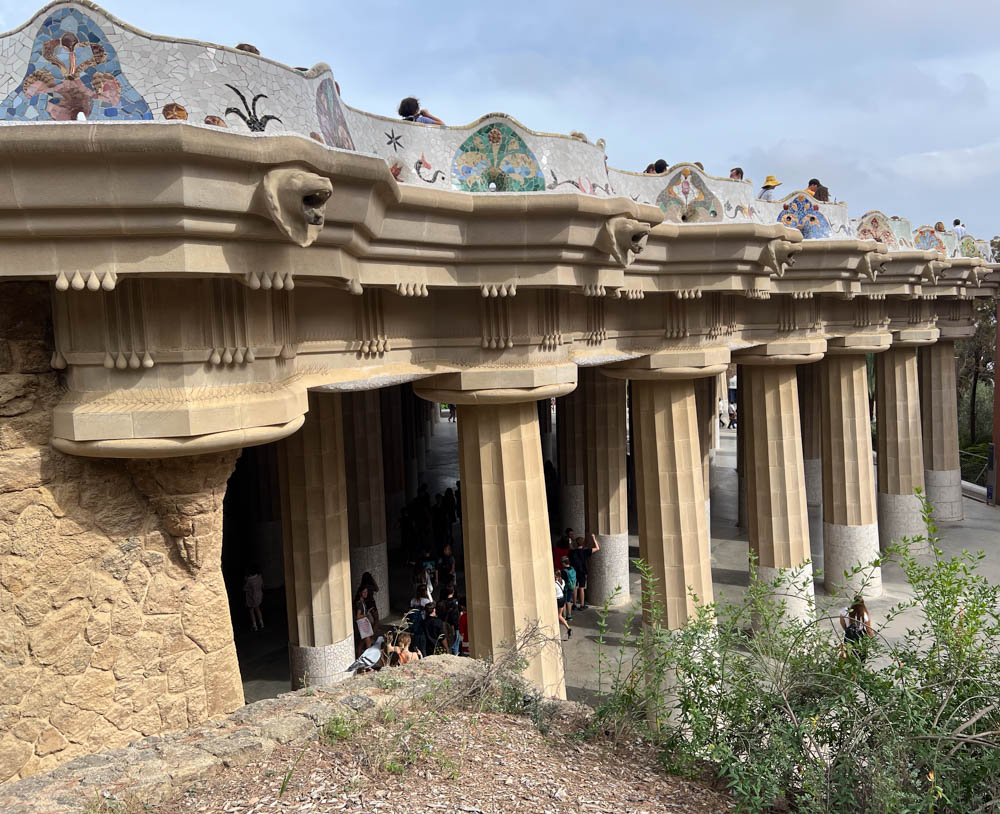
Below the open theater area is the columned “hypostyle” room. Hypostyle is a Greek term meaning an area with rows of columns supporting the roof. Well, this certainly fits that description!
This area has 86 columns and was conceived as a marketplace. Of course, that never happened.
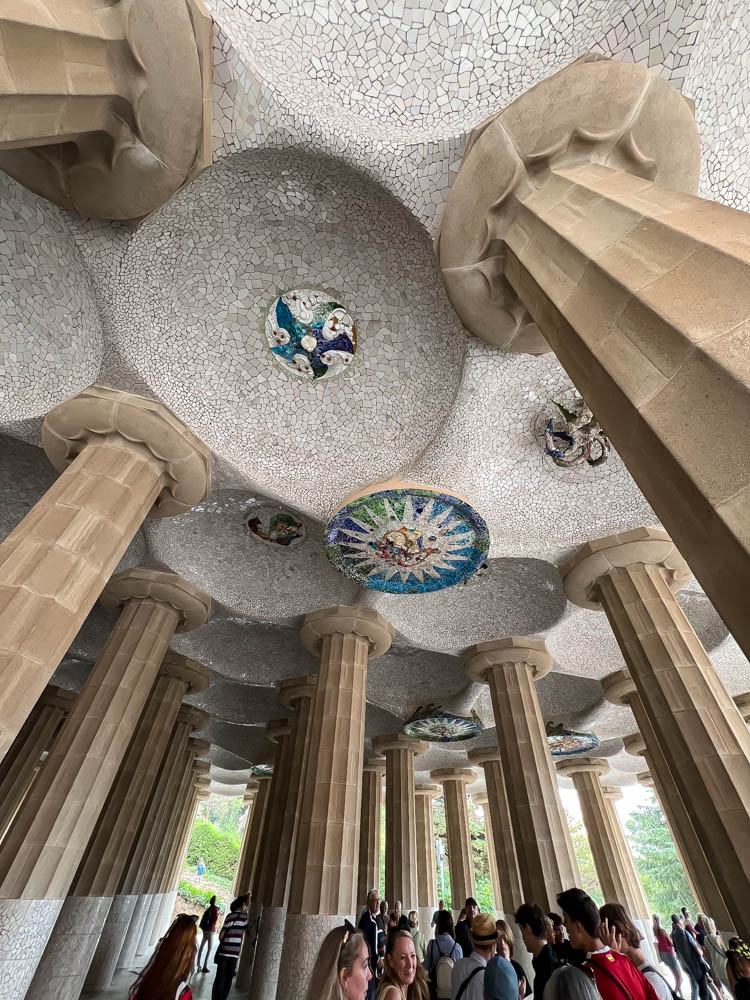
The ceiling is also tiled with an interesting shape repeating circular shape. Many small mosaics also appear throughout.
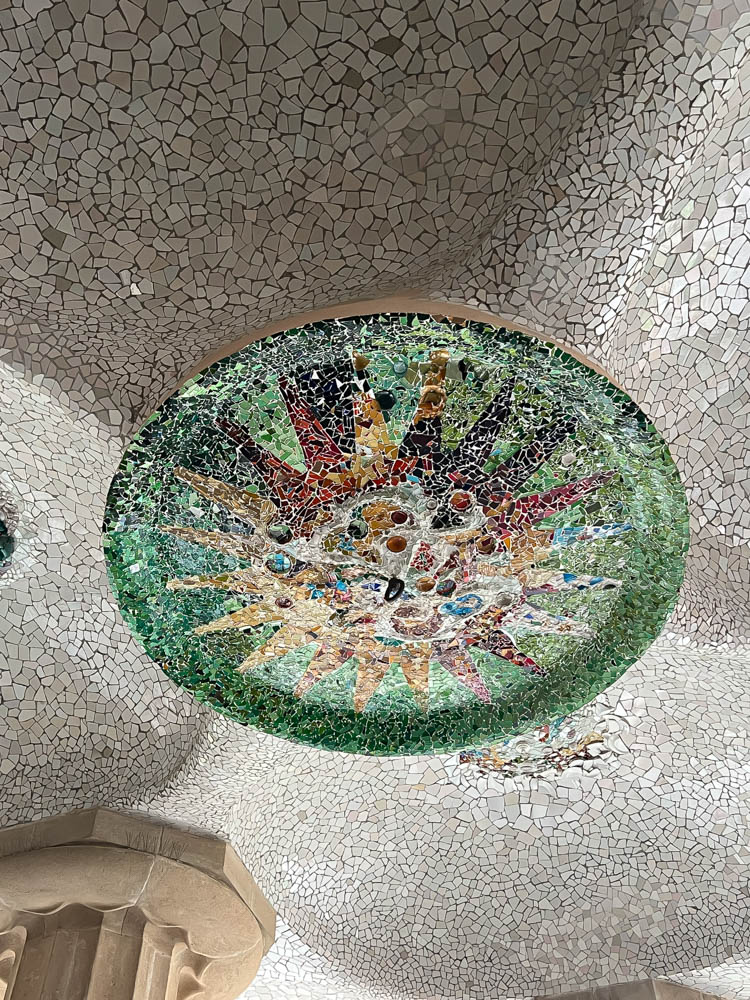
I think this one looks like a jester’s hat! It’s probably an octopus. LOL!
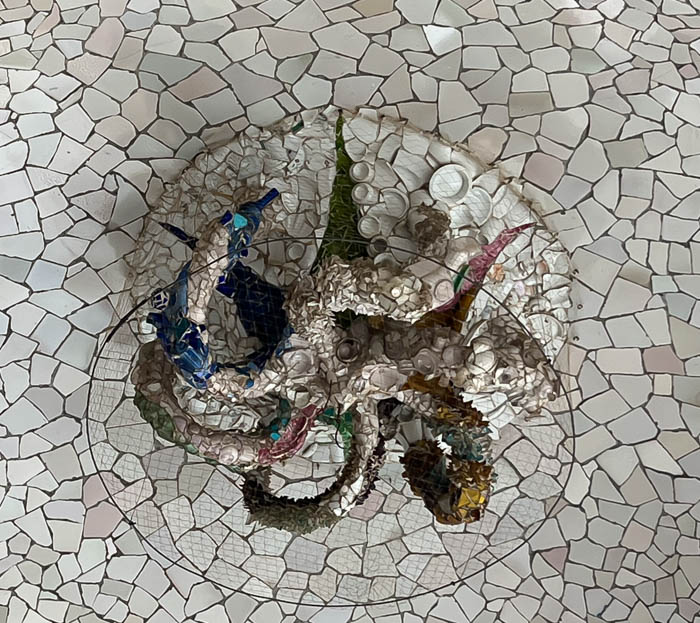
If you go the opposite direction from the columns, you enter an area called the “Washerwoman’s Portico”. It’s made of rough stones in the shape of a large wave, with one of the columns being a washerwoman, as you see below.
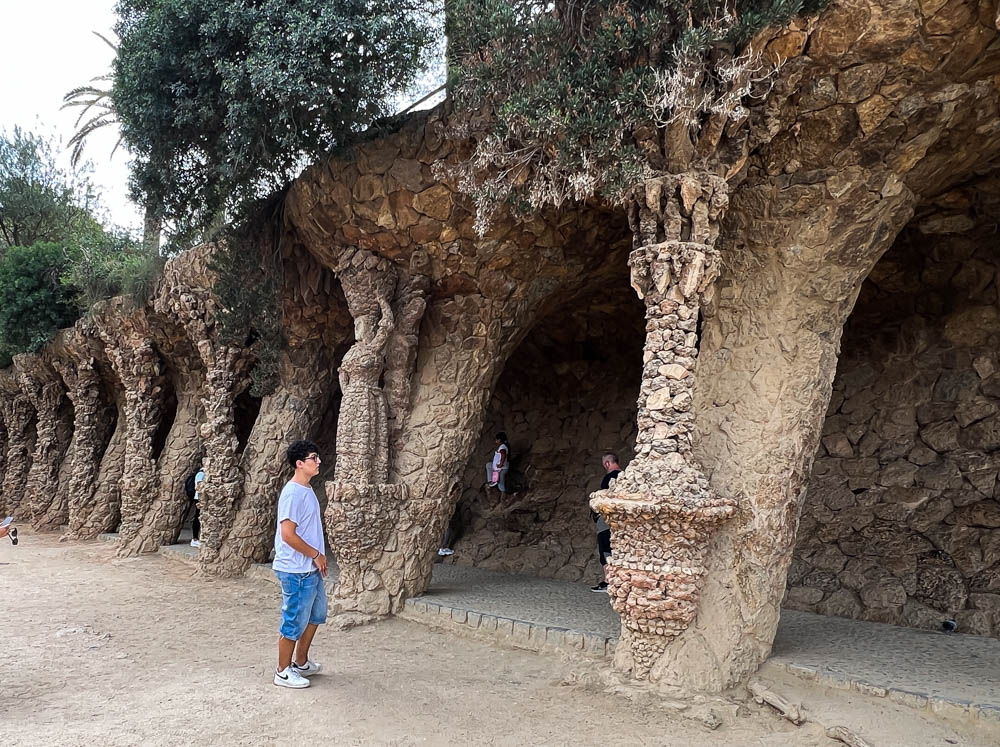
Gaudi designed a number of these rough stone walkways, carriageways and viaducts.
OK! Back at the top of the open-air theater….This is the view across and out towards Barcelona.
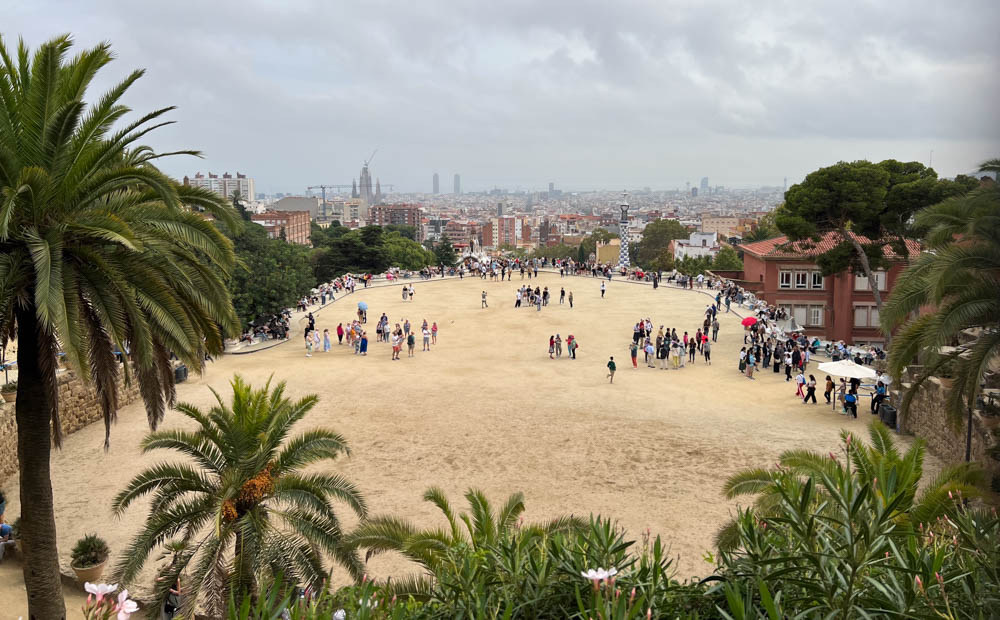
We’re standing up over the back, which is completely different. It’s made naturally with rough stone. The columns behind the palm trees are designed to look like trees with branches at the top.
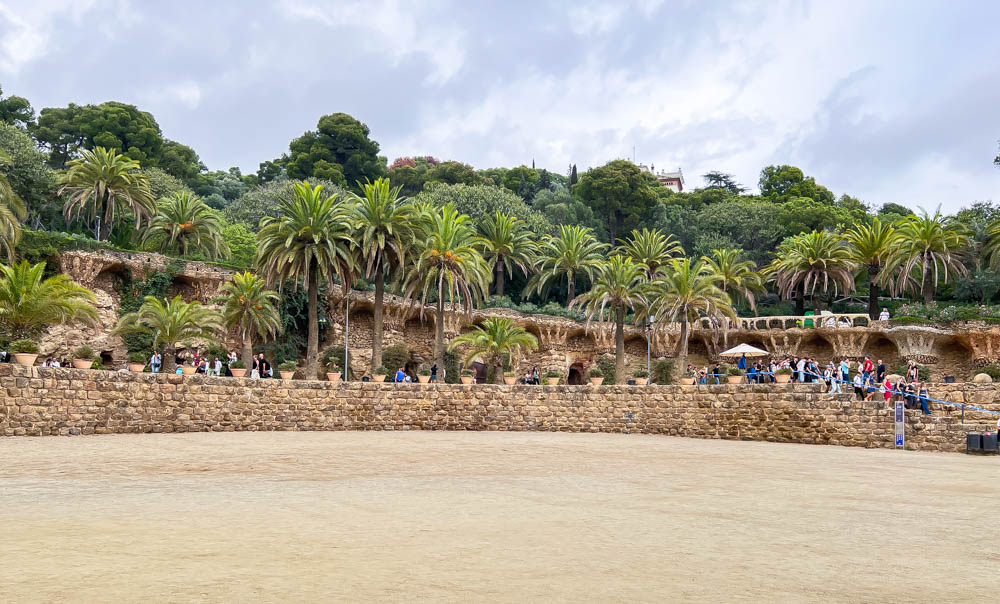
Almost everywhere else in the Park away from this area is natural. Gaudi designed multiple rough stone walkways, carriageways and viaducts. He was especially careful to design a way for water to flow during heavy rains without ruining the Park.
Here’s a walkway under one of the viaducts.
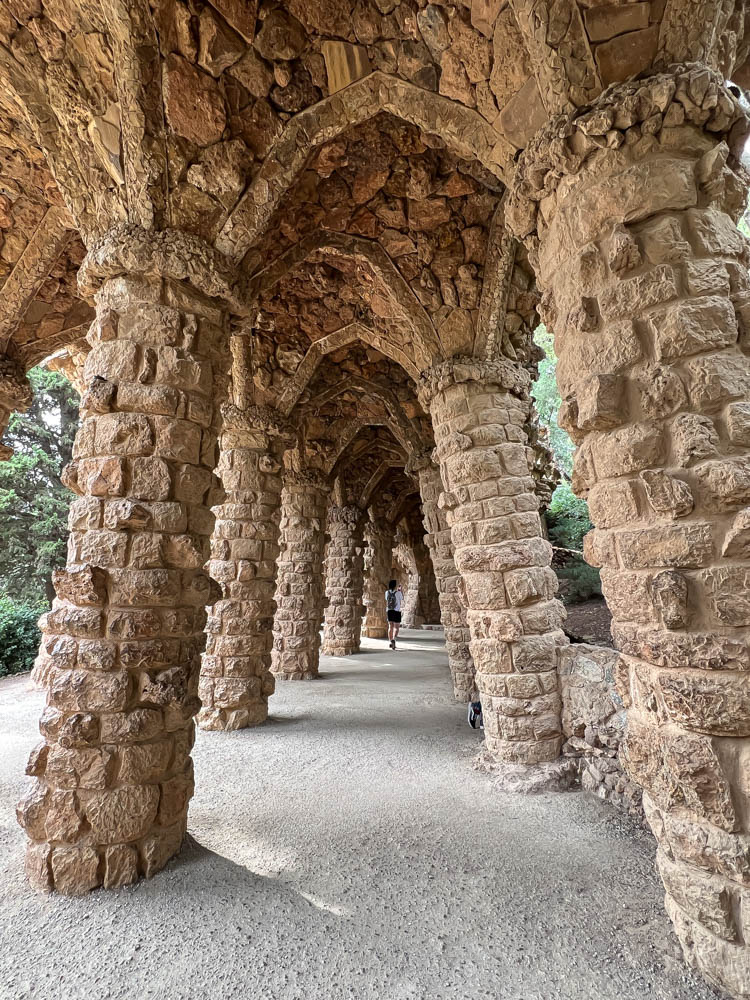
And here is one of the rough stone benches scattered around.
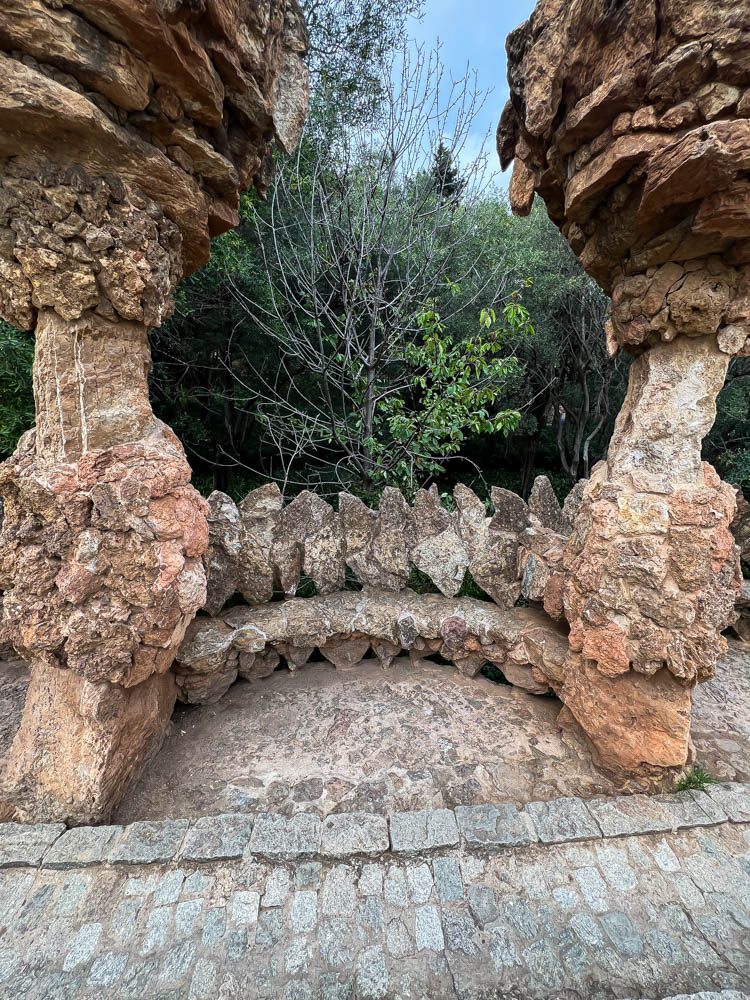
The rough stone look is quite different compared to the tilework in the other area of the Park.
Whelp, we didn’t take a lot of pictures of plants, so this ends our tour of Park Guell!
See you tomorrow!
